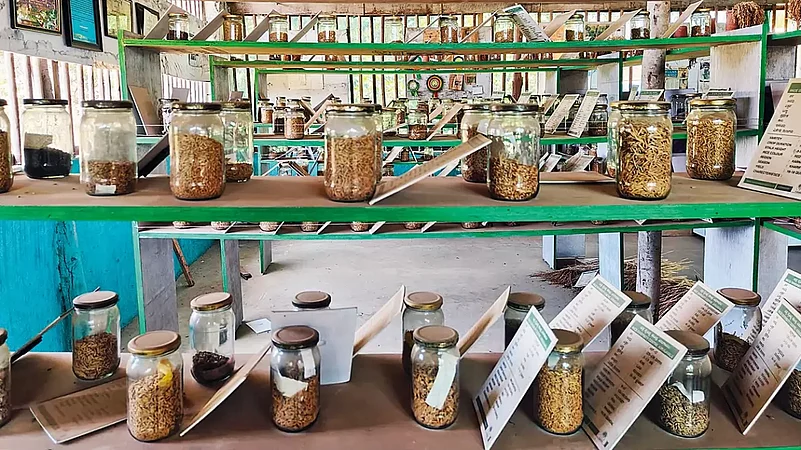Indigenous Wisdom
I wanted to become a museum curator and so, in the first year of college, I took up archaeology and museology. But I could not continue further studies as I had to take care of my family after my father developed a serious illness. I was the oldest son. That’s how I landed the traditional profession of my family: farming. I started farming on my ancestral farm in Kirugavalu village in Mandya district of Karnataka. Initially, for three years, I tried only conventional farming or chemical farming, as it is called. We already had three varieties of rice and that inspired us to create a bigger selection of rice varieties. Then, I thought, why can’t we convert our farm into a live rice museum?
Advertisement
We then started collecting rice seeds from neighbouring villages, then from neighbouring talukas and districts, and finally from across the entire country. I went around collecting seeds and growing them, and then distributing them to farmers. We wanted to conserve traditional varieties of rice for future generations. To that end, I set up a Rice Diversity Centre on the first floor of my house in 1996. It is a farmer-initiated non-profit traditional paddy diversity curating and training centre. We aim to conserve paddy diversity and disseminate the indigenous wisdom of farmers. In our collection, we also have scented rice, medicinal rice, rain-fed rice (which can just grow in the rain) and deep-water varieties. Till date, we have conserved 1,350 varieties of paddy including the Black Jasmine of Thailand, green rice from Odisha and the Burma Black variety. Everything is grown organically here. We have also come up with a fine version of black rice which was not available. We plan to get it registered with the National Innovation Foundation in Gujarat, and distribute it across the country.
Advertisement

Food as Medicine
In 2012, I received the Plant Genome Saviour Farmer Reward/Recognition award from the Department of Agriculture and Farmers’ Welfare, Government of India. In 2015, ICAR-Indian Institute of Horticultural Research conferred me with the award of excellence in horticulture. While I have received many awards and recognition for my work, I have not got the necessary support of the government with which we can conserve more varieties. We want to multiply these traditional rice varieties, analyse their medicinal and nutrient properties and spread awareness. Forty years ago, our food served as medicine. Today, we are consuming medicine as food.
Long Live the King of Fruits
We are also known for growing and conserving mango varieties that were cultivated during the time of Tipu Sultan, who had erected a watch tower in our village to keep an eye on the British forces marching towards Srirangapatnam. Tipu Sultan donated orchards to his soldiers at Kirugavalu to grow different varieties of mangoes, and one of my ancestors had served in his army. An area of a radius of five km was full of mango orchards. This one is called Bada Bagh and is even mentioned in the Gazetteer. When I got custody of the farm, there were 130 - 135 mango varieties. My grandmother used to tell us that during their time, they needed a mashaal (traditional torch) to enter the orchard because it was so dense. A jungle of mangoes. The mangoes would be sent to Tipu as well as to the Maharaja of Mysore.
Advertisement
Inexplicable Attachment
Today, around 120 varieties still exist here. Some of the mangoes are unique—some taste like sweet lime or apple, some are shaped like a banana or scented like jeera. My father would tell me stories that when he was a child, he could pop 25 mangoes into his mouth at one go—so small was one of the varieties. It’s now extinct. After the Krishna Raja Sagara dam came up on the Cauvery, farmers started cutting down mango trees and shifted to paddy cultivation to take advantage of the irrigation facilities. But my family continued to grow mangoes. My grandmother loved one particular mango. It was called the Amini. She would pluck the mangoes and distribute them among the family and officers. During the mango season, she would spend 10-15 days under the tree. When she died, the mango tree also fell soon after for no reason. Call it attachment?
Advertisement
(As Told To Omar Rashid)
Syed Ghani Khan is a progressive farmer from Mandya in Karnataka




















